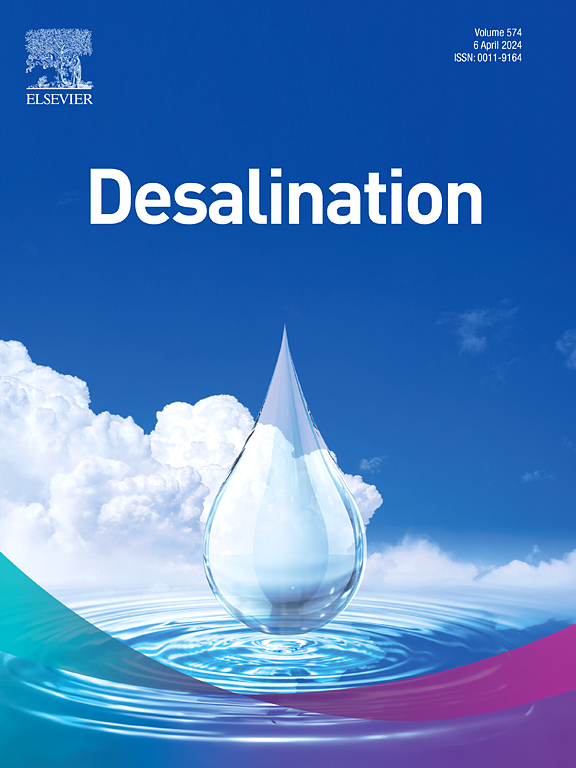Heat transfer, and Energy, Exergy, Economic, Exergoeconomic, Exergoenvironment, Enviroeconomic (6E) analysis of a modified pyramidal solar still with pulsating heat pipe, PCM and fins: An experimental investigation
IF 8.3
1区 工程技术
Q1 ENGINEERING, CHEMICAL
引用次数: 0
Abstract
The rising global demand for freshwater, driven by population growth and water scarcity, necessitates efficient desalination solutions. This study presents a comprehensive heat transfer analysis and a 6E assessment (Energy, Exergy, Economic, Exergoeconomic, Exergoenvironmental, and Enviroeconomic) of novel solar still (SS) design integrating a Pulsating Heat Pipe (PHP), Phase Change Material (PCM), and fins. Three configurations of pyramidal solar stills (PSS) were assessed through experimental investigations: Case 1 is a Conventional Pyramidal Solar Still (CPSS), Case 2 integrates Phase Change Material (PCM) and fins (MPSS1), and Case 3 incorporates Pulsating Heat Pipe (PHP), PCM, and fins (MPSS2). The yield in Case 3 was 5.42 L/m2/day, which was 35.40 % and 94.96 % higher than the yields of Case 2 and Case 1, respectively. Case 3 also demonstrated an average energy efficiency of 44.10 %, surpassing Case 2 and Case 1 by 23.58 % and 31.51 %, respectively. Additionally, the exergy efficiency of Case 3 was 28.72 % higher than Case 2 and 19.30 % greater than Case 1. The average total heat transfer coefficient for Cases 1, 2, and 3 were 24.54 W/m2-K, 25.23 W/m2-K, and 30.29 W/m2-K, respectively. Economic analysis indicated Cost per Liter (CPL) values of $0.014 for Case 3, which exhibited cost reductions of 14.28 % and 41.33 % compared to Case 2 and Case 1, respectively. Energy production factors for Cases 1, 2, and 3 were 0.89, 0.69, and 0.73 yr−1, respectively. Case 3 achieved the highest savings ($217.5), surpassing Case 2 by 35.07 % and Case 1 by 83.54 %. Its advanced design with PHP, PCM, and fins resulted in the highest energy-economic parameter (22.178 kWh/$). The treated water met potable standards with a pH of 6.98, salinity removal, and reduced TDS (72 mg/L). This study emphasizes that incorporating fins, PCM, and PHP into CPSS enhances water yield, energy efficiency, and economic feasibility while promoting sustainability.
求助全文
约1分钟内获得全文
求助全文
来源期刊

Desalination
工程技术-工程:化工
CiteScore
14.60
自引率
20.20%
发文量
619
审稿时长
41 days
期刊介绍:
Desalination is a scholarly journal that focuses on the field of desalination materials, processes, and associated technologies. It encompasses a wide range of disciplines and aims to publish exceptional papers in this area.
The journal invites submissions that explicitly revolve around water desalting and its applications to various sources such as seawater, groundwater, and wastewater. It particularly encourages research on diverse desalination methods including thermal, membrane, sorption, and hybrid processes.
By providing a platform for innovative studies, Desalination aims to advance the understanding and development of desalination technologies, promoting sustainable solutions for water scarcity challenges.
 求助内容:
求助内容: 应助结果提醒方式:
应助结果提醒方式:


